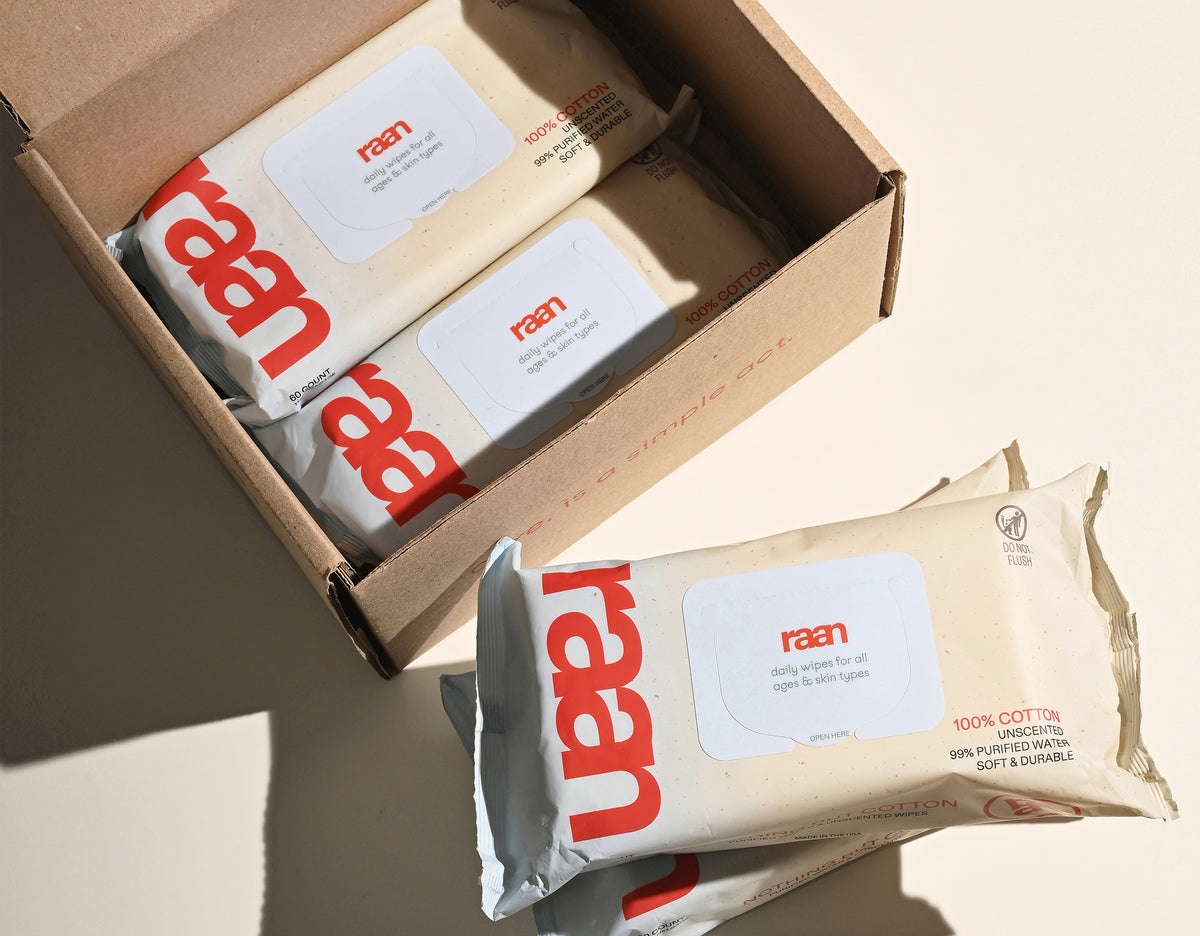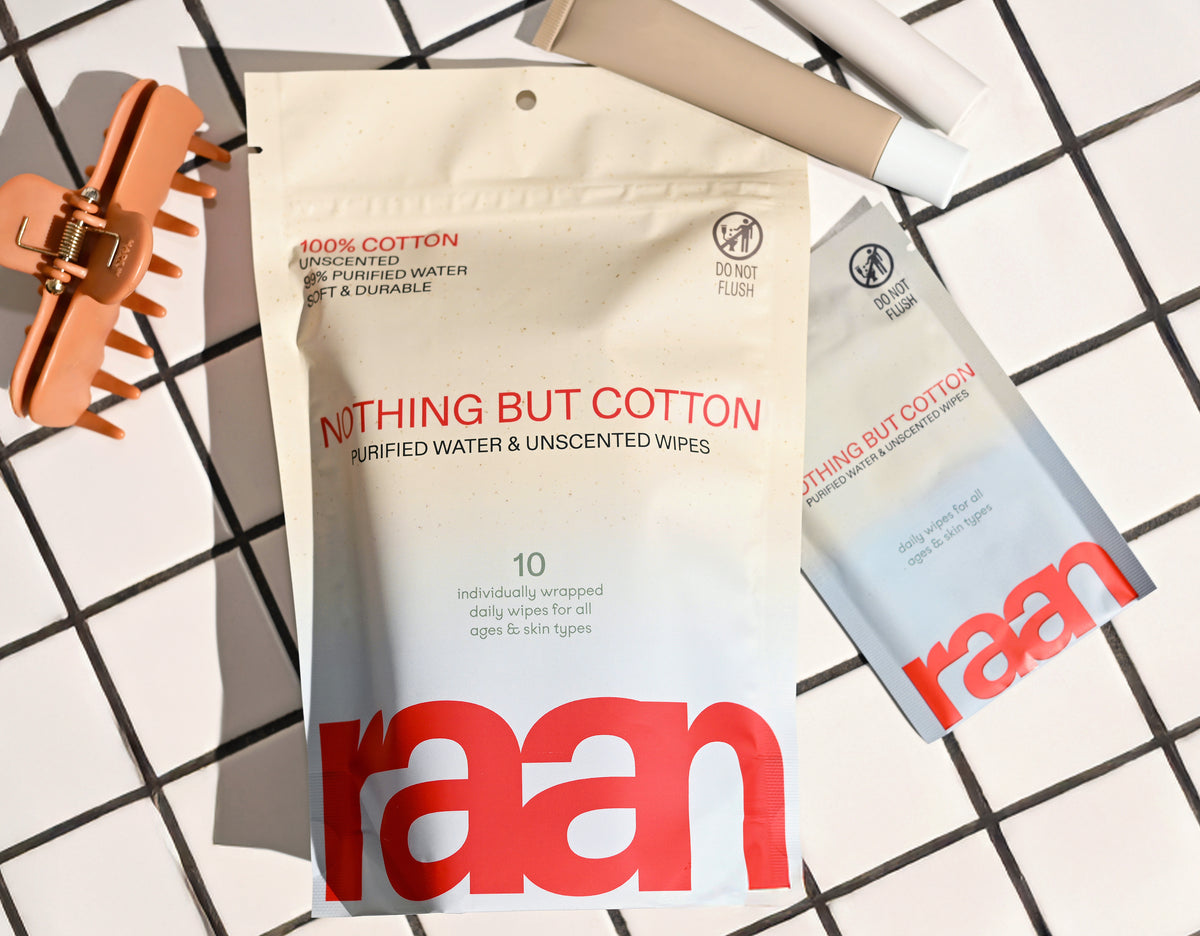Why Understanding Wipe Expiry Matters
You reach for that pack of wipes tucked away in your diaper bag, only to find them bone dry. Or maybe you're staring at a bulk supply you bought months ago, wondering if they're still safe to use on your baby's delicate skin. How long do wipes last isn't just about getting your money's worth—it's about safety, effectiveness, and peace of mind.
Key Takeaways
- Most wipes last 2-3 years when unopened and 1-3 months after opening, depending on ingredients and storage conditions.
- Signs of expired wipes include dryness, discoloration, and unusual odors.
- Proper storage in cool, dry places with tight seals helps maximize the shelf life of wipes.
- Knowing how long wipes last is important for safety, effectiveness, and peace of mind.
- Expired wipes may not be safe for use, especially on sensitive skin like a baby's.
Table of Contents
- Why Understanding Wipe Expiry Matters
- What Are Wipes, Really?
- Do Wipes Actually Expire?
- How Long Do Wipes Last? The Real Timeline
- What Actually Affects How Long Wipes Last
- How to Tell If Your Wipes Have Gone Bad
- Proper Storage to Maximize Wipe Shelf Life
- Can You Safely Extend Wipe Life?
- Making Informed Choices About Wipe Longevity
Here's what most people don't realize: not all wipes are created equal when it comes to shelf life. The materials, ingredients, and packaging all play crucial roles in determining whether your wipes will last weeks or years. And unlike that carton of milk with a clear expiration date, wipes often leave you guessing.
We're going to cut through the confusion and give you the facts. From the science behind what makes wipes expire to the red flags that signal it's time to toss that pack, you'll know exactly what to look for. Plus, we'll share storage secrets that can extend your wipes' lifespan—because nobody wants to deal with dried-out wipes during a messy diaper change.
What Are Wipes, Really?

Before we dive into expiration timelines, let's get clear on what we're actually dealing with. Wipes are essentially pieces of material—cotton, polyester, wood pulp, or bamboo—that have been infused with a liquid solution. Think of them as portable, pre-moistened cleaning cloths designed for convenience.
The material itself is just the delivery system. What really matters is the solution it's soaked in, which typically contains water, preservatives, and various additives depending on the intended use. This liquid component is what determines both the wipe's effectiveness and its shelf life.
Types of Wipes and Their Purposes
Not all wipes serve the same purpose, and their formulations reflect these differences:
- Baby wipes: Designed for sensitive skin with gentle ingredients and minimal preservatives
- Disinfectant wipes: Contain antimicrobial agents for surface cleaning, not skin contact
- Adult cleansing wipes: Often include moisturizers and may have stronger preservatives
- Specialized wipes: Face wipes, body wipes, and travel-sized options with targeted formulations
Each type has different shelf life expectations because of their unique ingredient profiles. Baby wipes, for instance, often prioritize gentleness over longevity, while disinfectant wipes are formulated to maintain their antimicrobial properties for extended periods.
Understanding these basics helps explain why that pack of baby wipes might dry out faster than your household cleaning wipes, and why storage recommendations vary between different types. The gentler the formulation, the more careful you need to be about preserving freshness and effectiveness.
Do Wipes Actually Expire?
Yes, wipes do have a shelf life—but it's not as straightforward as the expiration date on your yogurt. Most wipes don't "expire" in the traditional sense where they become unsafe overnight. Instead, they gradually lose effectiveness, moisture, and safety over time.
Here's what's actually happening: the preservatives that keep bacteria and mold at bay start to break down, the moisture begins to evaporate, and the material itself can degrade. Some brands print clear expiration dates, while others use vague "best used by" language that leaves you guessing.
The key difference between "expiration" and "degradation" matters for your family's safety. An expired wipe might still clean effectively but could harbor bacteria growth. A degraded wipe might be perfectly safe but too dry to do its job.
How Long Do Wipes Last? The Real Timeline

Unopened Packs: The Storage Sweet Spot
When stored properly in a cool, dry place, most unopened wipe packs maintain their effectiveness for 2-3 years. This timeline isn't random—it's based on how long the preservatives can maintain their antimicrobial properties and prevent moisture loss through packaging.
The variability comes down to formulation differences. Wipes with minimal preservatives (often marketed as "natural" or "gentle") typically last on the shorter end of this range, while those with more robust preservation systems can maintain quality for the full three years or even longer.
| Wipe Type | Unopened Shelf Life | Key Factors |
|---|---|---|
| Standard baby wipes | 2-3 years | Balanced preservatives, moderate moisture |
| Natural/minimal ingredient wipes | 1-2 years | Fewer preservatives, gentler formulation |
| Disinfectant wipes | 2-4 years | Strong preservatives, antimicrobial focus |
| Adult cleansing wipes | 2-3 years | Similar to baby wipes, may have added moisturizers |
Opened Packs: The Countdown Begins
Once you break that seal, everything changes. Opened wipe packs typically maintain their effectiveness for 1-3 months, though some can last up to a year under ideal conditions. The moment air hits those wipes, moisture starts evaporating and contamination risk increases.
The biggest factor isn't time—it's exposure. A pack with a tight-fitting lid stored in a cool bathroom cabinet will outlast one with a flimsy adhesive closure left in a hot car by weeks or even months.
What Actually Affects How Long Wipes Last
The Ingredient Factor
The formula inside your wipes determines their staying power more than any other factor. Wipes with food-grade preservatives like sodium benzoate and potassium sorbate—the same ones used in your favorite snacks—strike a balance between safety and longevity.
Natural wipes often rely on organic aloe and minimal preservatives, which sounds appealing but means shorter shelf life. Synthetic preservatives, while less "clean" sounding, can keep wipes stable for years. It's a trade-off between ingredient simplicity and longevity.
Packaging: Your First Line of Defense
The difference between a flip-top lid and a simple adhesive seal can mean months of additional usability. Hard plastic lids create better moisture barriers, while soft-pack closures are convenient but less protective.
Flip-Top Packaging Pros
- Better moisture retention
- Easier one-handed access
- More reliable seal over time
Flip-Top Packaging Cons
- More plastic waste
- Bulkier for travel
- Higher cost per pack
Storage Conditions: The Make-or-Break Factor
Heat is the enemy of wipe longevity. Every 10-degree temperature increase can roughly double the rate of degradation. That pack left in your car during summer? It's aging in fast-forward.
Humidity matters too, but not how you'd expect. While you might think moisture would help keep wipes wet, high humidity can actually promote bacterial growth and break down the preservative system faster.
How to Tell If Your Wipes Have Gone Bad

Expired wipes don't always announce themselves with obvious mold or terrible smells. Sometimes the signs are subtle, and using compromised wipes on sensitive skin can lead to irritation or infection. Here's how to spot the warning signs before they become a problem.
Visual Red Flags
Start with a quick visual check every time you open a new pack. Discoloration is often the first sign something's wrong—look for brown spots, dark patches, or any color that seems "off" compared to fresh wipes. These discolorations usually indicate bacterial growth or ingredient breakdown.
Mold growth is less common but definitely possible, especially in wipes stored in humid conditions. It typically appears as fuzzy spots in green, black, or white. If you see any mold, discard the entire pack immediately.
Texture and Moisture Changes
Fresh wipes should feel consistently moist and maintain their structural integrity when you pull them out. If wipes are tearing easily, falling apart in your hands, or feeling unusually dry, they've likely passed their prime.
On the flip side, wipes that feel overly slimy or have developed an unusual slippery texture may have bacterial overgrowth. Trust your instincts—if the texture feels wrong, it probably is.
The Smell Test
Good wipes should have either no scent or a mild, pleasant fragrance if they're scented varieties. Any sour, musty, or chemical-like odors indicate bacterial growth or ingredient breakdown. Even unscented wipes can develop off-putting smells when they expire.
Some people describe the smell of expired wipes as similar to wet cardboard or old gym socks. If you notice any unusual odor when you open the pack, it's better to err on the side of caution.
Proper Storage to Maximize Wipe Shelf Life
The difference between wipes that last their full shelf life and those that degrade quickly often comes down to storage habits. Small changes in how and where you store your wipes can add months to their usability.
Temperature Control Strategies
Keep unopened wipes in a cool, dry place away from direct sunlight. Room temperature (68-72°F) is ideal, but slightly cooler is even better. Avoid storing wipes in bathrooms with poor ventilation, near heating vents, or in cars where temperatures fluctuate dramatically.
For opened packs, consistency matters more than the exact temperature. A stable 75°F environment is better than one that swings between 65°F and 80°F throughout the day.
Best Storage Locations
- Bedroom closet or dresser drawer
- Pantry or linen closet
- Cool, dry basement storage
- Interior cabinets away from heat sources
Storage Locations to Avoid
- Hot cars or garages
- Humid bathrooms without ventilation
- Direct sunlight or near windows
- Above appliances that generate heat
Moisture Preservation Techniques
Once you open a pack, every interaction with air causes moisture loss. Make sure the closure mechanism—whether it's a flip-top lid or adhesive seal—closes completely after each use. Press out excess air before sealing if you're using a soft-pack variety.
Some parents swear by flipping wipe packs upside down periodically to redistribute moisture evenly throughout the stack. While this isn't necessary for all brands, it can help prevent the top wipes from drying out in packs that don't have perfect moisture distribution.
Smart Bulk Buying and Rotation
If you buy wipes in bulk, implement a simple rotation system. Store newer packs behind older ones, and always use the oldest stock first. Write purchase dates on packs with a permanent marker if expiration dates aren't clearly printed.
For families going through multiple packs per week, bulk buying makes sense. But if you're a light user, buying smaller quantities more frequently might be more economical than dealing with expired wipes. For more tips on managing your supply, check out how many wipes do i need.
Can You Safely Extend Wipe Life?
The internet is full of DIY solutions for reviving dried-out wipes, but most of these methods introduce contamination risks that outweigh any cost savings. Adding water to dried wipes can create an ideal environment for bacterial growth, especially if you're not using distilled water or sterile techniques.
If you do choose to revive wipes, only use them for non-sensitive cleaning tasks—never on broken skin, faces, or diaper areas. The safest approach is to accept that dried-out wipes have reached the end of their useful life for personal care purposes. If you want to avoid this scenario altogether, consider Nothing But Cotton Wipes, Unscented for superior moisture retention and shelf stability.
A better strategy is choosing wipes with superior moisture retention from the start. Look for products with effective packaging design and proven shelf stability rather than trying to extend the life of inferior products. For added convenience and freshness, individually wrapped wipes are a smart choice for travel or occasional use.
Making Informed Choices About Wipe Longevity
Understanding how long wipes last isn't just about getting your money's worth—it's about ensuring the products you use on your family's skin remain safe and effective. The key is finding the right balance between shelf life, ingredient safety, and your specific usage patterns.
Remember that expiration dates are guidelines, not hard rules. Trust your senses, store products properly, and don't hesitate to discard wipes that show any signs of degradation. Your family's skin health is worth more than saving a few dollars on expired products. For more details on the science and safety of wipe expiration, see this external resource.
Whether you're stocking up for a new baby, managing a busy household, or just want reliable cleaning solutions, choosing wipes with transparent ingredients, proper packaging, and realistic shelf life expectations will serve you better than chasing the cheapest option or trying to extend products beyond their intended lifespan. If you're curious about the best options available, explore our guide to best cotton wipes for sensitive skin and everyday use.
For a deeper dive into how long baby wipes last if unopened, you can also reference this external guide.
Frequently Asked Questions
How long do wipes take to degrade?
The time it takes for wipes to degrade varies widely based on their material. Conventional wipes containing plastic fibers can take hundreds of years to break down, while unbleached, 100 % cotton wipes like ours decompose much faster—typically within a few months under the right composting conditions.
What is the lifespan of baby wipes?
Baby wipes themselves don’t have a set ‘lifespan’ once opened, but their quality depends on proper storage. Kept sealed and stored in a cool, dry place, unopened wipes can last about 12 to 18 months. After opening, they should be used within a few weeks to maintain moisture and effectiveness.
How long do wet ones wipes last?
Wet wipes like Wet Ones generally have a shelf life of about 12 to 18 months when unopened. Once opened, their moisture and preservative balance can degrade, so it’s best to use them within a few weeks to avoid drying out or bacterial growth.
How long do sanitary wipes last?
Sanitary wipes, designed for personal hygiene, typically have a shelf life similar to other wet wipes—around 12 to 18 months unopened. After opening, they should be used promptly, usually within a few weeks, to ensure they remain moist and effective without risking contamination.
Do wipes go bad?
Yes, wipes can go bad. Over time, preservatives lose effectiveness, and wipes may dry out or become breeding grounds for bacteria once opened. Storing them properly and paying attention to expiration dates helps ensure they stay safe and functional.
Are wet wipes more hygienic?
Wet wipes can offer a hygienic advantage over dry cloths or tissues because they combine gentle cleansing with moisture and preservatives that reduce bacteria. However, hygiene depends on the wipe’s ingredients and usage—wipes without harsh chemicals and with verified preservatives provide safe, effective cleaning without irritation.






